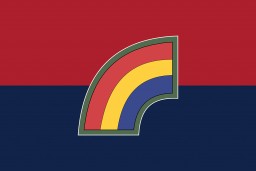You searched for: dachau
<< Previous | Displaying results 51-100 of 300 for "dachau" | Next >>
-
Dachau (Abridged Article) - ID Card/Oral History
Media EssayPrisoners of the Dachau concentration camp were subjected to horrific conditions, forced labor, and medical experiments. The camp was liberated by American forces on April 29, 1945. Here, Dachau surviviors and US Army veterans share th...
-
Dachau (Abridged Article) - Historical Film Footage
Media EssayDachau opened in Germany in March 1933. It was the first regular concentration camp of the Nazi regime. Prisoners were subjected to horrific conditions, forced labor, and medical experiments. Dachau became the model for all other Nazi concentration...
-
Edward Weiss describes Dachau shortly after the liberation
Oral HistoryGI Edward S. Weiss, a resident of Gaithersburg, Maryland, was at the Dachau concentration camp shortly after its liberation.
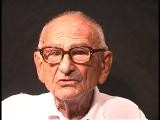
-

-

-

-
Close-up of corpses in the crematorium mortuary in Dachau
PhotoClose-up of corpses piled in the crematorium mortuary in the newly liberated Dachau concentration camp. Dachau, Germany, May 1945. This image is among the commonly reproduced and distributed, and often extremely graphic, images of liberation. These photographs provided powerful documentation of the crimes of the Nazi era.
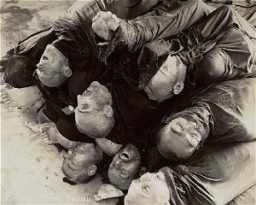
-
Two survivors prepare food outside barracks in Dachau
PhotoTwo survivors prepare food outside the barracks in Dachau, Germany, May 1945. This image is among the commonly reproduced and distributed images of liberation. These photographs provided powerful documentation of the crimes of the Nazi era.

-
Dachau survivors at liberation
PhotoCamp survivors crowded in barracks at liberation. Dachau, Germany, April 29-May 1, 1945.
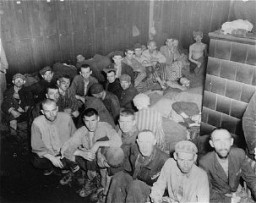
-
Medical experiment performed at the Dachau concentration camp
PhotoMedical experiment performed at the Dachau concentration camp to determine altitudes at which German pilots could survive. Germany, 1942.
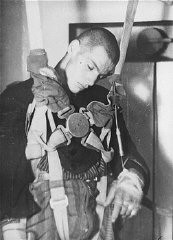
-
Boxcars containing bodies of victims outside the Dachau camp
PhotoUS soldiers discovered these boxcars loaded with dead prisoners outside the Dachau camp. Here, they force German boys—believed to be members of the Hitler Youth (Hitlerjugend; HJ)—to view the atrocity. Dachau, Germany, April 30, 1945.
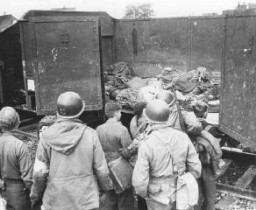
-
Heinrich Himmler during an inspection of the Dachau camp
PhotoHeinrich Himmler, head of the SS, speaks to an inmate of the Dachau concentration camp during an official inspection. Dachau, Germany, May 8, 1936.
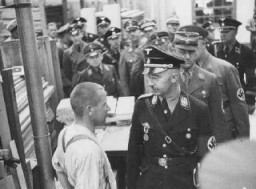
-
US veteran James Rose describes his impressions of Dachau upon liberation
Oral HistoryJames A. Rose, of Toledo, Ohio, was with the 42nd (Rainbow) Division.
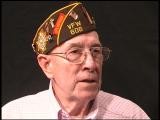
-
Forced laborers building a Dachau subcamp in Mühldorf
PhotoForced laborers build the south wall of the foundation of the new Dachau satellite camp of Weingut I in Mühldorf . Germany, 1944.
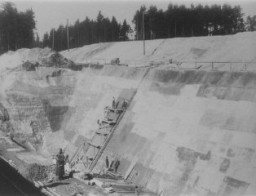
-
A witness testifies about the murder of Catholic priests at Dachau
PhotoFriedrich Hoffman, holding a stack of death records, testifies about the murder of 324 Catholic priests who were exposed to malaria during Nazi medical experiments at the Dachau concentration camp. Dachau, Germany, November 22, 1945.
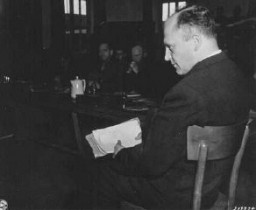
-
US nurse Pat Lynch describes treating survivors in a subcamp of Dachau
Oral HistoryPat was one of thousands of US nurses who served in evacuation hospitals during the liberation of concentration camps in Europe. She cared for camp survivors, many of whom were in critical condition upon liberation.
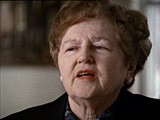
-
Sandor (Shony) Alex Braun describes playing the violin for SS guards in Dachau. after two prisoners before him had been killed
Oral HistoryShony was born to religious Jewish parents in a small Transylvanian city. He began to learn the violin at age 5. His town was occupied by Hungary in 1940 and by Germany in 1944. In May 1944, he was deported to the Auschwitz camp in Poland. He was transferred to the Natzweiler camp system in France and then to Dachau, where he was liberated by US troops in April 1945. In 1950, he immigrated to the United States, and became a composer and a professional violinist.
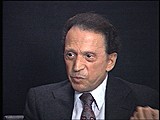
-
Abraham Klausner describes encountering survivors of the Dachau camp
Oral HistoryRabbi Abraham Klausner was a US Army military chaplain. He arrived in the Dachau concentration camp in May 1945. He was attached to the 116th evacuation hospital unit and worked for about five years in displaced persons camps, assisting Jewish survivors.
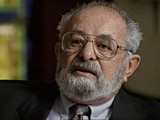
-
David (Dudi) Bergman describes being rescued by inmates before he could be taken to the Dachau crematorium
Oral HistoryThe Germans occupied David's town, previously annexed by Hungary, in 1944. David was deported to Auschwitz and, with his father, transported to Plaszow. David was sent to the Gross-Rosen camp and to Reichenbach. He was then among three of 150 in a cattle car who survived transportation to Dachau. He was liberated after a death march from Innsbruck toward the front line of combat between US and German troops.

-
Sam Itzkowitz describes a death march from Landsberg, a subcamp of Dachau, to the Bavarian Alps
Oral HistoryThe Germans invaded Poland in September 1939. When Makow was occupied, Sam fled to Soviet territory. He returned to Makow for provisions, but was forced to remain in the ghetto. In 1942, he was deported to Auschwitz. As the Soviet army advanced in 1944, Sam and other prisoners were sent to camps in Germany. The inmates were put on a death march early in 1945. American forces liberated Sam after he escaped during a bombing raid.

-
Abraham Lewent describes the moments following his liberation from a death march from the Dachau camp
Oral HistoryLike many other Jews, the Lewents were confined to the Warsaw ghetto. In 1942, as Abraham hid in a crawl space, the Germans seized his mother and sisters in a raid. They perished. He was deployed for forced labor nearby, but escaped to return to his father in the ghetto. In 1943, the two were deported to Majdanek, where Abraham's father died. Abraham later was sent to Skarzysko, Buchenwald, Schlieben, Bisingen, and Dachau. US troops liberated Abraham as the Germans evacuated prisoners.
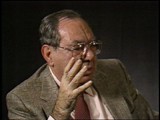
-
William (Bill) Lowenberg describes forced labor in the Kaufering subcamp of the Dachau concentration camp
Oral HistoryAs a boy, Bill attended school in Burgsteinfurt, a German town near the Dutch border. After the Nazis came to power in Germany in January 1933, Bill experienced increasing antisemitism and was once attacked on his way to Hebrew school by a boy who threw a knife at him. In 1936, he and his family left Germany for the Netherlands, where they had relatives and thought they would be safe. However, after Germany invaded the Netherlands in May 1940, antisemitic legislation--including the order to wear the Jewish…

-
Kaufering
ArticleAt the Kaufering complex, part of the Dachau camp system, prisoners were forced to labor under brutal conditions to build underground facilities for German fighter aircraft production.

-
Mühldorf
ArticleThe SS established the Mühldorf camp complex in mid-1944 as a satellite system of Dachau to provide labor for the production of the Messerschmitt 262 jet fighter.

-
Eugeniusz Rozenblum
ID CardEugeniusz's parents married in 1922 in the Soviet Union, where his father owned a textile mill. Fearing arrest by the Soviets for being "bourgeois," Eugeniusz's parents fled to Poland, where Eugeniusz was born. 1933-39: Eugeniusz was a secondary school student and was preparing to enter university, either in Poland or at the Hebrew University in Palestine. The German occupation of Lodz in September 1939 interrupted his schooling. One month after the occupation, a German soldier came to his family's door…

-
Betty Leiter Lauchheimer
ID CardBetty was one of 14 children born to a religious Jewish family in Aufhausen, a village in southwestern Germany. Her father was a successful cattle dealer in the area. On May 8, 1903, at age 20, Betty married Max Lauchheimer, a cattle merchant and kosher butcher. They lived in a large house by an orchard in the village of Jebenhausen. Betty and Max had two children, Regina and Karl. 1933-39: In late 1938 Betty and Max were visiting their daughter in Kippenheim when police arrested Max and their son-in-law.…
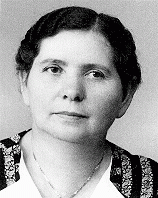
-
Isachar Herszenhorn (Irving Horn)
ID CardIsachar was born to a Jewish family in the Polish city of Radom, approximately 75 miles south of Warsaw. The city was the center of Poland's leather-tanning industry. Isachar's father worked as a salesman for a nearby tanning factory. His father was a successful salesman and the family lived comfortably. 1933-39: During registration for Isachar's first-grade class in 1934, a Jewish boy was pushed down the stairs. When his mother confronted the principal about the incident, all he said was that the boy had…

-
Members of the US press view rows of corpses
PhotoVisiting American newspaper and magazine correspondents view rows of corpses in Dachau. Photograph during an inspection following the liberation of the camp. Dachau, Germany, May 4, 1945.
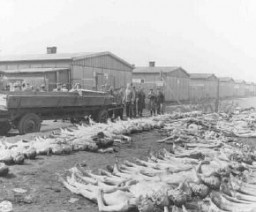
-
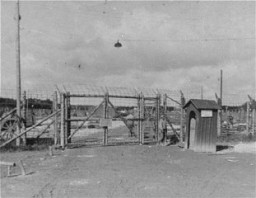
-
Barracks in Kaufering
PhotoA view of barracks in the Kaufering network of subsidiary camps of the Dachau concentration camp. Landsberg-Kaufering, Germany, after April 27, 1945.

-
Barracks in Kaufering
PhotoView of barracks after the liberation of Kaufering, a network of subsidiary camps of the Dachau concentration camp. Landsberg-Kaufering, Germany, April 29, 1945.

-
Chart of Prisoner Markings
ArtifactA chart of prisoner markings used in German concentration camps. Dachau, Germany, ca. 1938–1942. Beginning in 1937–1938, the SS created a system of marking prisoners in concentration camps. Sewn onto uniforms, the color-coded badges identified the reason for an individual’s incarceration, with some variation among camps. The Nazis used this chart illustrating prisoner markings in the Dachau concentration camp.
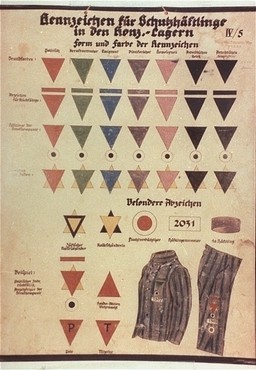
-
Clandestine photograph of a death march
PhotoClandestine photograph, taken by a German civilian, of Dachau concentration camp prisoners on a death march south through a village on the way to Wolfratshausen. Germany, between April 26 and 30, 1945.
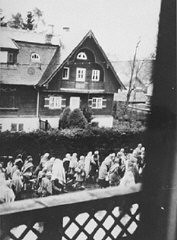
-
Humiliation of political prisoners
PhotoHumiliation of political prisoners: Social Democratic Party (SPD) inmates hold a placard which reads "I am a class-conscious person, party boss/SPD/party boss." Dachau concentration camp, Germany, between 1933 and 1936.
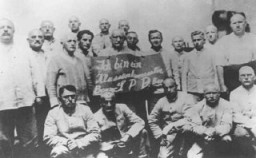
-
Moses Rechnitz: Maps
Media EssayMoses Rechnitz was born to Jewish parents in the Polish town of Bedzin on June 3, 1923. Moses was 16 years old when German troops invaded Poland in September 1939. By 1941, he was a slave laborer on a German railroad construction project outside o...
-
Karl-Heinz Kusserow
ID CardKarl-Heinz was born during World War I, while his father was in the German army. After the war, his Lutheran parents became Jehovah's Witnesses and gave their children daily Bible lessons. When Karl-Heinz was 13, the family moved to the rustic Westphalian town of Bad Lippspringe. Their home became the headquarters of a new Jehovah's Witness congregation. 1933-39: Because of the Jehovah's Witnesses' missionary work, and because their sole allegiance was to God and His commandments, their activities were…
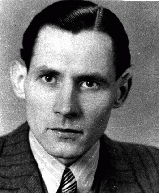
-
Sandor Braun
ID CardOften known as Sanyi, Sandor was born to religious Jewish parents in a small city in Transylvania, a province that had been ruled by Hungary until 1918. During the 1930s his home city was renamed I.G. Duca in honor of a slain Romanian leader. The fourth of six children, Sandor was also known by his Hebrew name, Yitzhak. The Brauns knew Yiddish, Hungarian, Romanian and Hebrew. 1933-39: Before Sandor's fourth birthday, a babysitter took him on an outing into the forest. When she fell asleep he wandered…
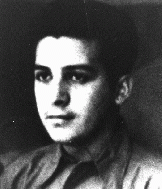
-
Allied prisoner of war describes work details
FilmMost Allied prisoners of war (POWs) were treated well compared to inmates of concentration camps. But, as former Dutch POW Captain Boullard explains here at Dachau concentration camp, some were subject to severe beatings and forced to work in harsh labor assignments.
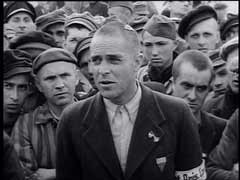
-
Kaufering IV camp
PhotoThe entrance gate to Kaufering IV subcamp of Dachau. This photograph was taken after liberation. Near Landsberg, Germany, after April 28, 1945.

-
A survivor of Kaufering IV
PhotoA survivor of Kaufering IV, one of the Dachau subcamps in the Landsberg-Kaufering area, with US soldiers after liberation. Kaufering, Germany, after April 27, 1945.
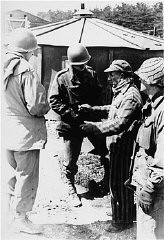
-
Romani (Gypsy) victim of Nazi medical experiments
PhotoA Romani (Gypsy) victim of Nazi medical experiments to make seawater safe to drink. Dachau concentration camp, Germany, 1944.

-
Saul Ingber
ID CardSaul was born to a Jewish family in the small northern Transylvanian town of Moisei, famous for its 18th-century monastery, to which many Christians came on pilgrimage. Saul's family was religious. His father transported lumber to several mills in the area. 1933-39: Saul and his brothers attended a Jewish school held at their neighbor's home. A rabbi led them in prayers and they learned quotations from holy texts. After his schooling he needed to learn a trade, so he decided to become a tailor. Jews were…
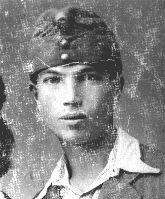
-
Szlamach Radoszynski
ID CardSzlamach was one of six children born to Yiddish-speaking, religious Jewish parents. Szlamach's father was a peddler, and the Radoszynski family lived in a modest apartment in Warsaw's Praga section on the east bank of the Vistula River. After completing his schooling at the age of 16, Szlamach apprenticed to become a furrier. 1933-39: During the 1930s Szlamach owned a fur business. Despite the Depression, he was hoping the economy would turn around so that he could make enough money to move into his own…

-
Josef Schoen
ID CardJosef was born to German Catholic parents. They lived in a Moravian village near the city of Sternberk in a German-inhabited region known as the Sudetenland. At that time Czechoslovakia was part of the Austro-Hungarian Empire. Upon graduation from a textile school, Josef supervised 600 employees at a silk factory in Moravska Trebova. 1933-39: After serving in the Czechoslovak army, Josef became a Jehovah's Witness in Prague, and refused to have anything more to do with the military, following the…
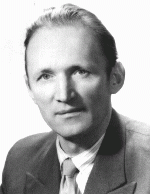
-
Shaye Rothkopf
ID CardShaye's town in the province of Lodz had a Jewish community that comprised almost one-third of the town's population. Shaye was very young when his father died during World War I. Afterwards, his grandparents helped to support his family. When Shaye was a teenager, his mother died. He and his siblings then lived with their grandparents. 1933-39: Swimming was Shaye's favorite pastime and he'd go with his friends to the banks of the Vistula River on every possible occasion. He worked in Lodz for a company…

-
Jules Izrael Zajdenweber
ID CardJules grew up in a Jewish family in the industrial city of Radom, which had a large Jewish population and was known for its armaments industry. The Zajdenwebers spoke Polish and Yiddish at home. Jules' father was a textile salesman and his mother was a corset maker. Jules, whose nickname was Ulek, attended public schools in Radom and was a member of a Zionist youth organization. 1933-39: Jews weren't safe in certain neighborhoods. Some classmates at Jules's Polish state secondary school belonged to…

-
Jan Komski
ID CardJan was born to a Catholic family in the small Polish town of Bircza. His father, a World War I veteran, moved the family to Brzozow shortly after the war. Brzozow was a small manufacturing town in southeastern Poland. After graduating from secondary school, Jan enrolled at the Academy of Fine Arts in Cracow. 1933-39: Cracow was a beautiful old city; Jan studied its remarkable churches and synagogues in his classes. By September 1939, however, the war engulfed the beauty of Cracow. He left to escape the…
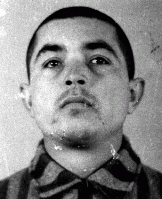
-
Xaver Franz Stuetzinger, a member of the Communist Party of Germany
PhotoXaver Franz Stuetzinger, a member of the Communist Party of Germany, was tortured by the SS at the Dachau concentration camp. He died in May 1935 without divulging his connections. Germany, before May 1935.
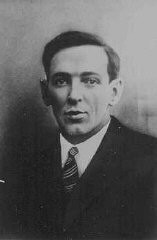
-
Flag graphic for US 20th Armored Division
PhotoA digital representation of the United States 20th Armored Division's flag. The US 20th Armored Division was occasionally known as the "Armoraiders" during World War II. They participared in the liberation of the Dachau concentration camp. The 20th Armored Division was recognized as a liberating unit in 1985 by the United States Army Center of Military History and the United States Holocaust Memorial Museum (USHMM).
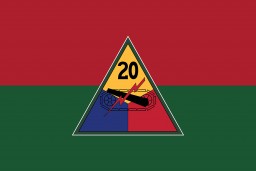
-
Flag graphic for US 42nd Infantry Division
PhotoA digital representation of the United States 42nd Infantry Division's flag. The US 42nd Infantry Division (the "Rainbow" division) was established in 1917 and fought in World War I. During World War II, they captured the cities of Würzburg, Schweinfurt, and Fürth. The division also entered the Dachau concentration camp. The 42nd Infantry Division was recognized as a liberating unit in 1985 by the United States Army Center of Military History and the United States Holocaust Memorial Museum…
